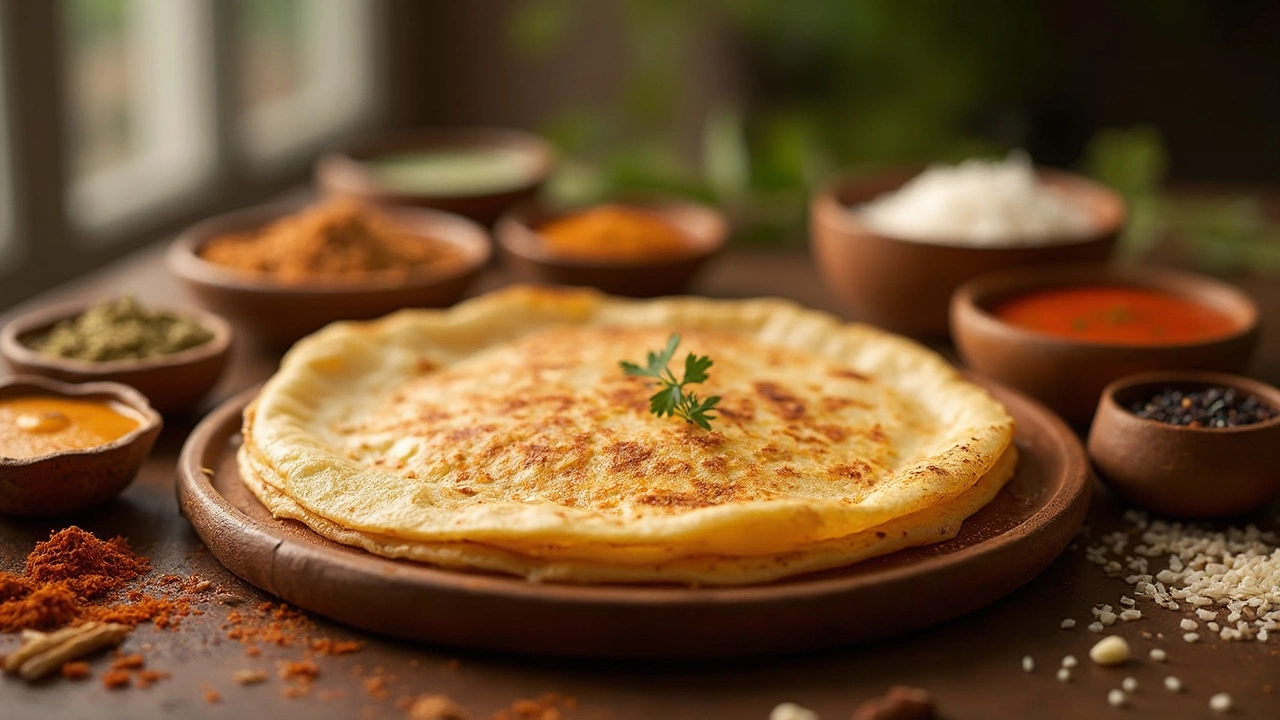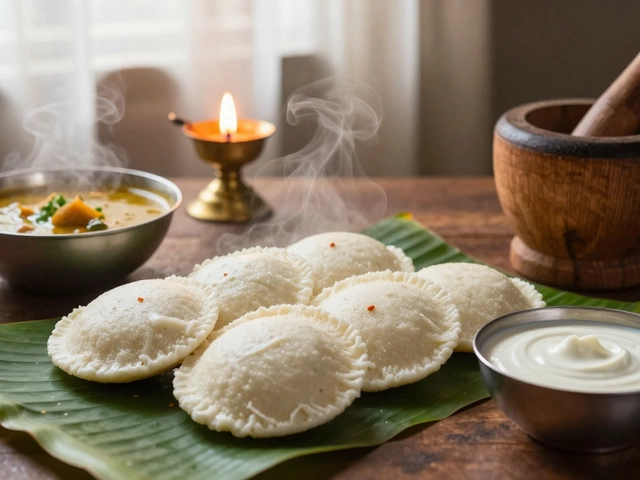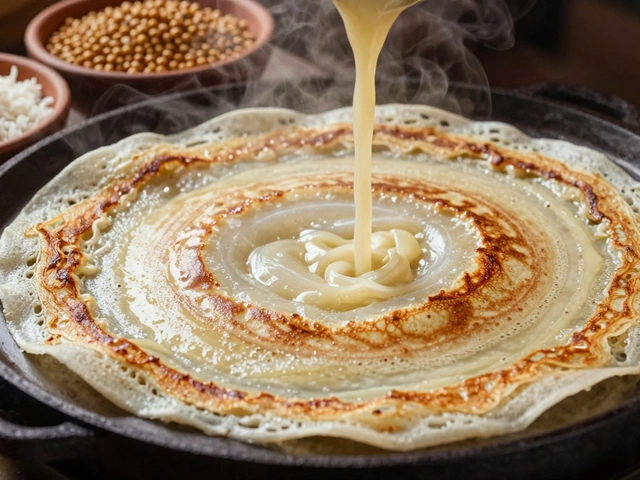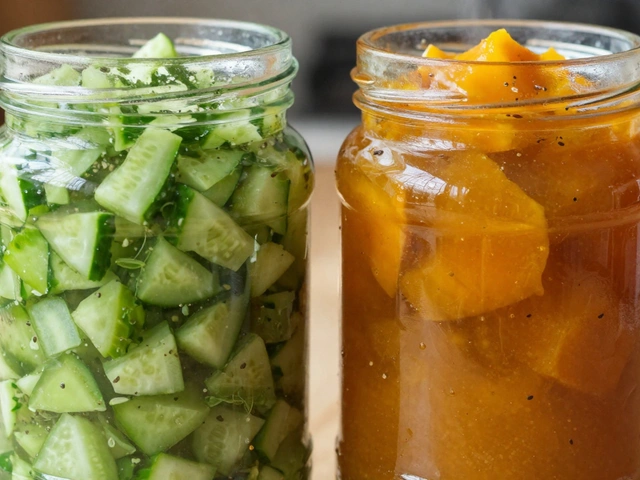Ever wondered if that crispy, delicious dosa you love could also be a secret boon for your gut? There's a good chance it is! Dosa, a staple South Indian dish, might not only tantalize your taste buds but could also have some perks for your digestive system. The magic, you see, lies in the fermentation process of its batter.
When you let that rice and urad dal mixture sit, letting the microbes do their part, you're not just prepping for a tasty meal. You're optimizing those ingredients for gut health. Fermented foods, in general, come packed with probiotics, and dosa is no exception. This makes it potentially helpful for maintaining a healthy gut flora.
- What Makes Dosa Unique
- The Fermentation Perk
- Nutritional Benefits
- Making Dosa Even Healthier
- Tips for Perfect Dosa Batter
What Makes Dosa Unique
Alright, let's dive into what makes dosa a standout superstar among foods. First things first, dosa is made primarily from rice and urad dal. But here's the cool part: it's not just any rice-based dish. The magic lies in its fermentation process. By soaking and fermenting the rice and lentils, dosa batter becomes full of good bacteria that can really aid your digestive health.
The skin-like crispiness and fluffy inner layers come from this fermentation, giving it that unique texture we all love. Fun fact: India's vast culinary scene has numerous types of dosa, but they all share that fermentation process, which makes them delightful yet gut-friendly. Plus, you get this lovely sour tang that keeps you coming back for more!
Another reason dosa stands out is its versatility. Want it plain with some chutney? Done. Fancy a filling like spicy potatoes or veggies? No problem. There's even masala dosa, stuffed with a savory potato curry, showing how creative you can get with one batter.
Besides being delicious, dosa can be your new favorite healthy swap. It's naturally gluten-free, making it a fantastic choice for those with wheat allergies or celiac disease. And if we're talking healthy, did I mention the protein from urad dal? It's like a hidden power punch in a gentle wrap.
For anyone who enjoys exploring dishes that bring flavor and health perks together, dosa truly stands in a league of its own, ticking all those boxes. In fact, considering its adaptability and health benefits, it's a food that might just deserve the spotlight in your regular diet rotation.
The Fermentation Perk
Fermentation isn't just a fancy word to throw around in health food circles; it's a real game-changer, especially when it comes to making your beloved dosa gut health friendly. The magic kicks off when rice and urad dal mix and chill together, creating a party for beneficial microbes to thrive.
The process takes about 8 to 12 hours, depending on your kitchen's warmth. During this time, lactic acid bacteria, which are superstar probiotics, multiply, and that’s great news for your tummy! These little guys can help balance your gut flora and play a role in better digestion and nutrient absorption. Amazing how science sneaks into such delicious bites, right?
Now, why exactly is this important? Well, a balanced gut can boost your overall mood and energy levels. Plus, compared to non-fermented options, fermented foods like dosa are usually easier to digest, which can be good news for those with sensitive stomachs.
| Nutrient | Benefit |
|---|---|
| Lactic Acid Bacteria | Promotes healthy gut flora |
| B Vitamins | Supports energy and mood |
So next time you're blending up that dosa batter recipe, give a nod to those friendly microbes. They're the unsung heroes turning your dosa into more than just a tasty meal. Mix your ingredients, let them sit, and watch the fermentation magic unfold. Who knew that waiting could taste so good?

Nutritional Benefits
So, why should you pay attention to the nutritional perks of a dosa? Well, besides being downright yummy, they bring a fair share of fiber, proteins, and some essential vitamins to your plate. Starting with the basics, the rice and urad dal combo isn't just there for taste. It's a source of carbohydrates and proteins, respectively, giving you a shot of energy while keeping you full longer.
Now, let's talk specifics. Urad dal is rich in protein and dietary fiber, which not only keeps your digestion smooth but can also be a boon if you're looking to manage your weight. Fermented foods like dosa are often easier to digest than non-fermented counterparts, thanks to the breakdown of complex nutrients into simpler compounds during fermentation.
B vitamins are another win for dosa lovers. The fermentation process actually boosts the levels of these vitamins, which are essential for energy production and maintaining a healthy nervous system. Plus, dosas are a vegan-friendly option, making it a great protein source for those steering clear of animal products.
If you're a numbers person, here's a quick look:
| Nutrient | Per 100g Dosa |
|---|---|
| Calories | 95 kcal |
| Carbohydrates | 15g |
| Proteins | 3g |
| Fiber | 1g |
| Fat | 1g |
These values can vary based on ingredients and preparation methods, but they give you a snapshot of the goodness packed into this beloved dish. Each dosa brings a balance of macronutrients that supports a gut-friendly diet while also being totally satisfying to eat.
Making Dosa Even Healthier
Alright, so you're hooked on the idea of a crispy, golden dosa that boosts your gut health, but how can you amp up its health factor even more? It turns out you can make a few tweaks to the classic recipe to pack in more goodness.
First up, consider adding some extra grains or seeds to your dosa batter recipe. Integrating grains like quinoa or millets can give you an extra dose of fiber, magnesium, and other essential nutrients. These additions can also make the batter more nutrient-dense without affecting its taste much.
- Quinoa: Rinse it thoroughly and soak it along with rice. It's a complete protein source, making it a superb add-on.
- Millets: They're gluten-free and add a nice, earthy flavor. Pearl or foxtail millet works well.
- Flaxseeds: Ground flaxseeds not only up the nutrition ante but are also great for digestion.
Now onto the veggies. Spice up your dosa by adding finely chopped vegetables into the batter or serving them on top while cooking. Think onions, spinach, or carrots – these not only boost the flavor but also cram in vitamins and fiber.
Don't forget about the oils you use. Switching to healthier oils like coconut or olive oil isn't just a trend – these oils are rich in good fats that can support heart health. And speaking of coconut, ever thought of adding grated coconut to the batter? It's traditional in some regions and adds a lovely twist to the flavor profile.
If you're keen on nutrition data, you might be interested to know:
| Ingredient | Benefit |
|---|---|
| Quinoa | High in protein and fiber |
| Flaxseeds | Rich in omega-3 fatty acids |
| Millets | Gluten-free, high in magnesium |
Lastly, watch that fermentation. The longer the batter ferments, the more probiotics it can develop. Just don't let it go too far! Taste and texture matter, after all.
By making these simple changes, your dosa can become not only a delightful culinary experience but also a more nutrient-packed meal. What’s not to love about that?

Tips for Perfect Dosa Batter
Getting that dosa batter recipe just right is like striking gold. It's the secret behind a dosa that's as crispy as you'd find on the streets of India or in your favorite South Indian restaurant. So, let's get into what makes a killer batter.
1. Choosing the Right Ingredients: You'll want to stick to your staples—rice and urad dal. A blend like 3 cups of parboiled rice to 1 cup of urad dal is what gets you that balanced batter. Some folks sneak in a bit of fenugreek seeds for that extra flavor punch.
2. Soaking is Key: Patience is your friend here. Let the rice and dal soak separately for about six hours. This softens them up nicely and sets the stage for successful grinding.
3. Grinding Matters: You'll need a good grinder that doesn't heat up too much. Grind the dal first to a smooth and fluffy consistency. Then, blend the rice. When mixing them, you're looking for a smooth but not too flowy batter—a kind of pancake batter consistency, if you will.
4. The Fermentation Game: This is where the fermented foods magic happens. Pour the batter into a large bowl, as it’ll rise. In warmer climates, or during summer, leaving it on your counter overnight usually does the trick. During colder seasons, you might need a warm spot like inside your oven with the light on.
5. Perfect Salt Timing: Mix in the salt after fermenting for the fluffiest results. Too early, and you might slow down the fermentation.
6. Consistency Check: Just before cooking, check the batter. If it's too thick, stir in a bit of water, a spoonful at a time. If it's too watery, you might need to adjust your grinding technique next time.
Getting that gut-friendly diet batch of dosa batter might require a bit of practice, but once you've nailed it, there's no going back. It's worth every bite!





